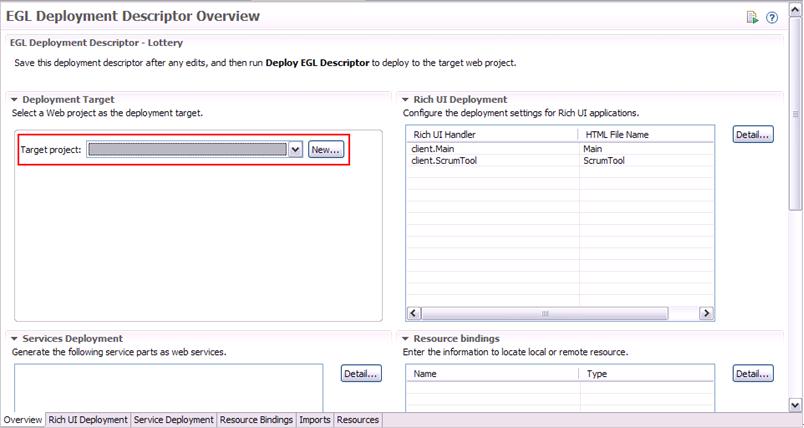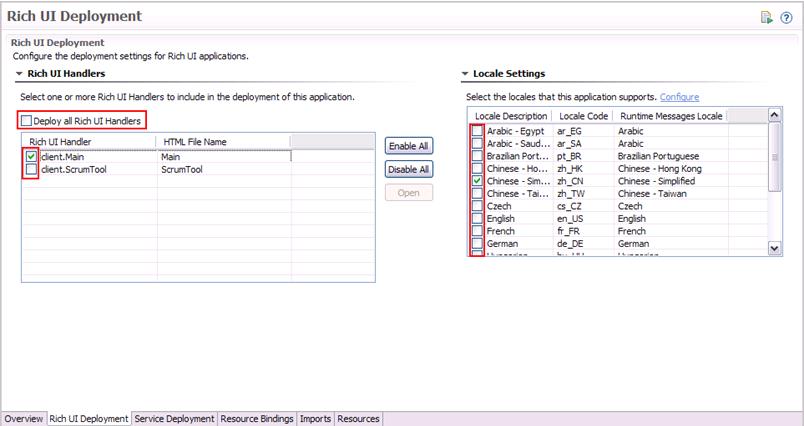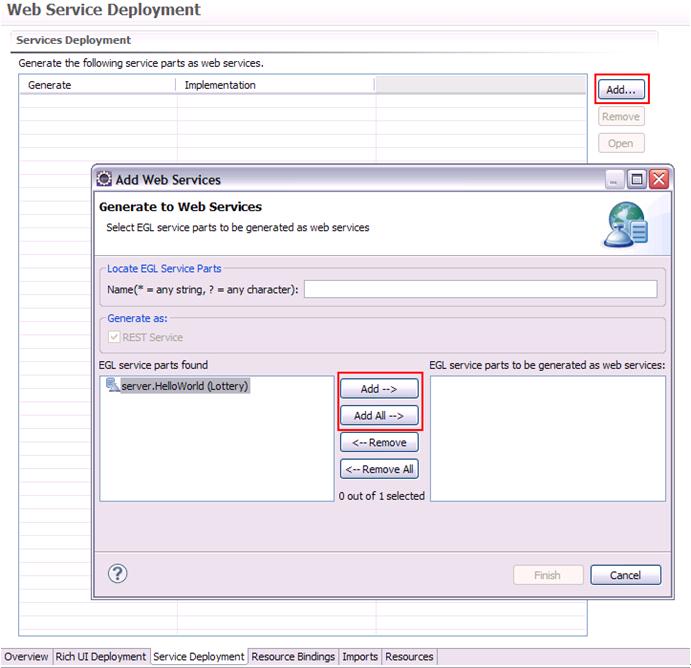Notice: this Wiki will be going read only early in 2024 and edits will no longer be possible. Please see: https://gitlab.eclipse.org/eclipsefdn/helpdesk/-/wikis/Wiki-shutdown-plan for the plan.
EDT:Deployment Introduction
Contents
Introduction
To make our EGL application run in test or product environment, we must have the generated HTML, Java class & JavaScript files packaged into WAR file which is conformed to JavaEE specification, and then deploy it to the web application server (e,g, Tomcat). EGL project itself cannot export as WAR file directly, so we introduce another concept of deployment in EDT. The deployment in EDT means that copy the generated stuffs from EGL project to a specified JavaEE project, and make sure the files & directory structure after copy will conform to JavaEE specification and easily exported as WAR file. EDT users can control the deployment process by specifying the configuation in deployment descriptor.
Deployment Descriptor File
There will be a Deployment Descriptor (DD for short) File in each EGL project you created. As we introduced in last section an EDT Deployment Operation is needed if you are writing a EGL project with Handler or Service. The DD file maintains all the deployment needed information. The following section will introduce the details of it.
The DD file will be created automatically when you create any of the EGL project in EDT. In the EGLSource folder with the same name of your project. Although RUIHandler and Service deployment will added to DD file automatically when you use creation wizard, there are still some settings need your manual modification. See the points listed below.
Overview Tab:
This tab shows all status of details tabs. You may switch to specific tab by click button “Details” or double click the item in grid.
Target Project combo box listed all dynamic web project in the current workspace. You should select one or create a new one for this field. When doing the deployment, this filed can not be empty.
Rich UI & Service Deployment:
One of the main purposes for DD file is to deploy Rich UI Handler and Rest Services to target project. These two types of EGL file will be added to the DD file by default when you create them by creation wizard.
You can manually modify the RUIHandlers/Services you want to deploy in these two tabs.
To modify the RUIHandlers you want to deploy, you need to uncheck the “Deploy all Rich UI Handlers” checkbox. This will enable the Rich UI Handler detail table. Then you can take a multi-selection by check the checkbox in front of the RUIHandler you want to deploy. The selected RUIHandler resources will be deployed to target project including HTML and JavaScript. Also you can modify the locale setting for the HTML file by configure the “Locale Settings” table. Just select the locales by checking the checkbox.
In the Service Deployment tab, all Rest Services you created will be listed in the table. If you forgot to check the option “Create as Web Services” when creating service, you can modify them in this tab easily. Just click the “Add” button at the right of the table. The “Add Web Services Wizard” will pop up, and you can manage the services in this pop up window. When configuration finished, click “Finish” button to accept it.
Resource Bindings:
The resource binding tab configures the DB resource or Deployed REST Service you may want to use in this project. If the project contains DB logics, EGL written REST Service or Third Party Service invocations, you may use these tab to configure these settings.
For details of Resource Binding, see the introduction Resource Binding Introduction
Imports & Resources:
The imports tab allows you to reference another DD file in different projects to reuse some settings. It can make your project structure more clear. For example, you have two EGL projects. The first one including all RUIHandlers, and the other one including all services. Then when deploy the RUIHandler project, you just to import the service one. This can reduce the redundancy and have a better consistency.
And the resources tab allows you to modify the resources you want to deploy. By default, all resources in WebContent/generatedJava/generatedJavaScript/src folders will be deployed. For example, you can modify the resources to remove the src folder to reduce the size of target project.
Deployment Operation
There are two way to trigger a deployment operation. You can trigger it by context menu of DD file -> “Deploy EGL Descriptor”, or by click this button at top-right of the DD file editor view. If the target project of DD file is empty, there will be an alert notifying you to modify it. And also if no RUIHandler or Service Deployment added in the DD file, there will be an alert too.
Some Tips of Deployment
1. If you are using Java external type in your projects, you should have configured the java build path of your EGL project to make sure no compile error in generatedJava codes. But when you deploy the EGL project to target project, the external JAR can not be deployed to target project. You need to modify the Java build path again in the target project manually.



